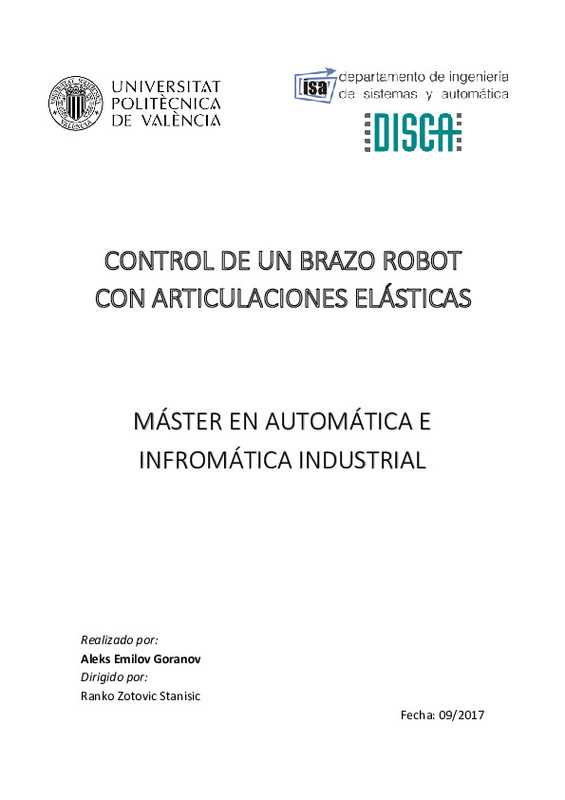|
Resumen:
|
This project is based on the implementation of different techniques of control, to control a robotic arm with elastic joints. The main objective of this project is the design of optimal control with which, we pretend to ...[+]
This project is based on the implementation of different techniques of control, to control a robotic arm with elastic joints. The main objective of this project is the design of optimal control with which, we pretend to operate the dynamic system at the lowest cost. Three modalities of the quadratic linear regulator have been tested: the classic, with trajectory tracking and the iterative. Previously the dynamic model has been obtained through the Lagrange-Euler equations that require the potential and kinetic energies of the different links. Then, the model has been linearized to move to the state space, which is the recommended way to manage and control multivariate processes. For the tests of the control, on the one hand, it has been tested and simulated with Matlab and on the other hand, it has been tested in the real plant. For the case of the real plant, a microcontroller has been used and it represents the control device. That involves interaction with sensors and actuators and the need to develop a software that performs all the tasks of interpreting information to determine and obtain the control algorithm that brings the system to the desired state. Also, homing has been implemented and security measures like controlled stop.
[-]
El objetivo de este proyecto es implementar distintas técnicas de control, para controlar un brazo robótico con articulaciones elásticas. Este proyecto se centra sobre todo en el control optimo con el que se procura la ...[+]
El objetivo de este proyecto es implementar distintas técnicas de control, para controlar un brazo robótico con articulaciones elásticas. Este proyecto se centra sobre todo en el control optimo con el que se procura la operación del sistema dinámico al menor costo. Se han probado tres modalidades del regulador lineal cuadrático: el clásico, con seguimiento de trayectoria y el iterativo. Previamente se ha obtenido el modelo dinámico a través de las ecuaciones de Lagrange-Euler que requieren de las energías potenciales y cinéticas de los diferentes eslabones. Después se ha procedido a linealizar el modelo para pasar al espacio de estados que es la forma recomendable para manejar y controlar procesos multivariable. Para probar el control por una parte se han realizado pruebas y simulación con Matlab y por otra se ha probado en la planta real. Para el caso de la planta real se ha tenido que usar un microcontrolador que representa el dispositivo de mando. Esto implica la interacción con sensores y actuadores y la necesidad de desarrollar un software que realice todas las tareas de interpretación de información para determinar y obtener el algoritmo de control que lleve el sistema al estado deseado. Asimismo, se ha implementado el homing y medidas de seguridad como es la parada controlada.
[-]
|





![[File]](/themes/UPV/images/mime.png)


